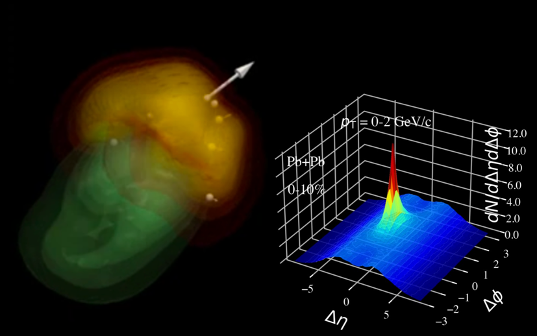Projectiles traveling at a speed greater than the velocity of sound generate Mach cones, such as the sonic boom originating from a supersonic aircraft. These kinds of Mach cones are also produced on the femtometer scale inside the droplets of quark-gluon plasma (QGP) by propagating jets in high-energy heavy-ion collisions at the Relativistic Heavy-ion Collider (RHIC) and Large Hadron Collider (LHC). Inside the subatomic droplets of QGP, energetic jet partons propagate at the velocity of light and lose energy and momentum to the medium through strong interaction. The lost energy and momentum becomes a source of sound in the medium with sound velocity only a fraction of the velocity of light. This generates a sound wave in the form of a Mach cone which will manifest itself in the final soft hadrons correlated with the energetic jets. Study of this Mach cone structure in the final soft hadron distribution can shed light on the equation of state (EoS) and shear viscosity in the QGP medium.

In a recent article (Phys. Rev. Lett. 130 (2023) 5, 052301), Xin-Nian Wang from NSD’s Nuclear Theory program and his collaborators explored the 3D structure of the jet-induced Mach cone excitation in Pb+Pb collisions at LHC through theoretical simulations of the jet transport inside a hydrodynamically expanding QGP. They found that the associated diffusion wake of the Mach cone produces a unique valley structure on top of the ridge from multiple parton scattering in soft hadron correlation with respect to photon-tagged jets in azimuthal angle and rapidity. The images in Fig. 1 show a 3D energy distribution of a jet-induced Mach cone and the soft hadron correlation.
This new dimension in the soft hadron and jet correlation in the rapidity direction opens up a new window to the study of jet-induced Mach cones. The unique structure should be easy to detect and will provide additional constraints on the equation of state and transport coefficients of the quark-gluon plasma as their study shows.